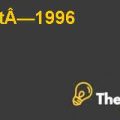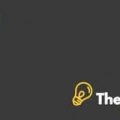Introduction:
North West Company is a Canada-based organization, and has been in establishment for more than 3 centuries. The traders of this company started trading in 1668, when it sailed from England in search a commodity “fur”. These traders later formed a company named Hudson’s Bay Company in 1670.The company went under many mergers and evolved through many names, until 1987 when the company rebirth under the current title “The North West Company” (NWC.)
NWC deals in retail enterprises with abroad range of products i.e. home good and outdoor products, but its core product is food. NWC operates in markets of Northern Canada, Western Canada, Rural Alaska, the Caribbean and the South Pacific Islands.
NWC operated within Canada until 1992, when with the acquisition of Alaska Commercial Company (ACC) expanded its roots to US regions and within twelve years 35.8 percent of company’s revenue accounted for international operations. Since the acquisition, NWC is divided into two segments, International and Canadian. The decision of extending to overseas markets proved even more beneficial when after some years due to low population growth, the demand for food and other products froze at a constant rate. This fall was responded by retailers increasing prices of their products, and so the industry is fierce and faces strong rivalry.
North West Company Analyzing Financials Statements Harvard Case Solution & Analysis
Financial Analysis:
NWC has been successfully growing in revenue terms, with the current growth of 5.27% (in Jan 2015). This growth may seem charming but is mostly balanced by the huge cost of doing business (currently 71.4%). NWC is no-where near to the Loblaw’s revenue growth of 31.6% but is still better than market’s average of3%.
The Fall in Profits reflects close competition and negative market conditions, where rising competition, have forced NWC to spent more expenses to maintain the stability. Therefore the cost of sales has risen from 70.51% to 71.42% in current year.
The stability in Revenue, have further effected return on equity ratios. This fall (from 19.93 to 19.10), may not seem too much in current terms, but with the wider observation of falling trend it seems more alarming and may give negative ideas to investors.
Debt to equity ratio represents companies gearing. A sudden jump from 0.43 to 0.74 reflects that NWC has acquired borrowing through debts in current years. An ideal condition is one where the company had no debt at all or has a Debt/Equity ratio of 0, and the situation starts raising red flags when this ratio exceeds from 1.
Interest cover ratio state the ability of the company to pay its interest from its profits. A constant track of this ratio is important to keep company off from creditor’s claims. NWC’s current interest coverage ratio (14.6 times) is not as promising as it was in 2013 (29 times) but is still sufficient enough.
Efficiency ratios is a good way to track cash cycle that involves, creditors inventory and debtors. It is feasible to keep high payable days and low inventory and receivable days, as the situation will lead to the company holding cash for a long period. As a result, this cash can be used for other purposes like short-term investments..........
This is just a sample partical work. Please place the order on the website to get your own originally done case solution.













